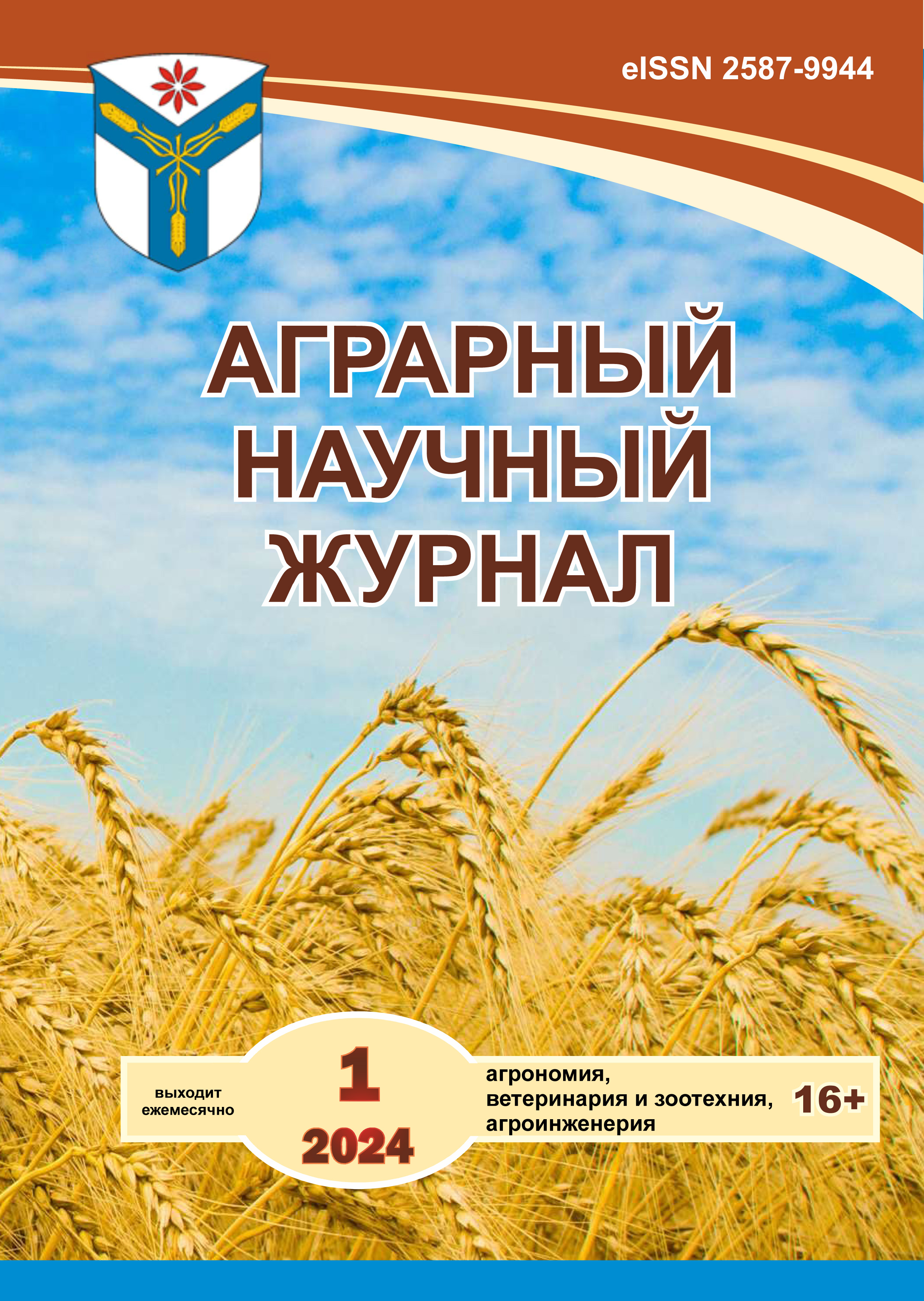Evaluation of the resistance of peach (Prunus persica (L.) Batsch) varieties to the main diseases under the subtropic climate of the Krasnodar region
DOI:
https://doi.org/10.28983/asj.y2024i1pp24-31Keywords:
curl, clasterosporiosis, moniliosis, peach, disease resistance, varietyAbstract
The article presents the results of studies conducted in 2018–2021 on the basis of collection peach plantings of the Subtropical Scientific Center of the Russian Academy of Sciences. The resistance of 48 promising peach varieties to the main fungal diseases in the subtropical zone of Russia - curl, clasterosporiosis and moniliosis - was studied. The most resistant peach varieties to curl in subtropical conditions can be recommended as new plantings: early ripening ones - Pushistyy ranniy, Summerset, Favorita Morettini, Amsden, Madeleine Pouille; mid ripening varieties - Redhaven, Anton Chekhov, Laika, Osenny Surprise, Larisa; late ripening variety - Lebedev. Peach varieties with very high resistance to clasterosporiosis have been identified: early ripening ones - Amsden, Madeleine Pouillet; mid ripening varieties - Anton Chekhov, Laika, Larisa, Osenny Surprise, Redhaven; late ripening variety - Veteran. Very high resistance to moniliosis have such early ripening varieties - Plamenny, Medin red, Collins, Pushistyy ranniy, Maycrest, Springold, Early Blow, Favorita Morettini, Early Red; medium ripening varieties Larisa, Laika; and late ripening vazriety Lebedev.
Downloads
References
Кузнецова А. П. Оценка устойчивости сортов плодовых культур к грибным болезням по данным многолетних наблюдений // Плодоводство и виноградарство юга России. 2014. № 29. С. 1–9.
Леонов Н. Н. Зависимость динамики развития курчавости листьев персика от гидротермических условий в зоне влажных субтропиков России // Субтропическое и декоративное садоводство. 2015 № 53. С. 147–153.
Плотников В. К., Насонов А. И., Салфетников А. А. К 100-летию закона Н. И. Вавилова о гомологических рядах в наследственной изменчивости // Политематический сетевой электронный научный журнал Кубанского государственного аграрного университета. 2020. № 160. С. 1–19.
Программа и методика сортоизучения плодовых, ягодных и орехоплодных культур; под ред. Е. Н. Седова, Т. П. Огольцовой. Орел, 1999. 606 с.
Ahmadpour А. Review of shot-hole disease of stone-fruit trees // Plant Pathology Science. 2017. No. 7(2). 1-13. https: //doi.org/2982/PPS.7/2/1.
Cao K., Zhou Z., Wang Q., Guo J., Zhao P., Zhu G. Genome-wide association study of 12 agronomic traits in peach // Nat. Commun. 2016. No.7. P.13246. https: //doi.org/10.1038/ncomms13246
Cirilli M., Rossini L., Geuna F., Palmisano F., Minafra A., Castrignan? T., Gattolin S., Ciacciulli A., Babini A. Genetic dissection of Sharka disease tolerance in peach (P. persica L. Batsch) // BMC Plant Biology. 2017. No. 17(1). https: //doi.org/10.1186/s12870-017-1117-0.
Karpun N. N., Yanushevskaya E. B., Mikhailova Ye. V. Mechanisms of formation of nonspecific induced plant immunity under biogenic stress (review) // Agricultural biology. Plant Biology. 2015. Т. 50. No. 5. С. 540.
Leonov N. Biological protection of plum from shot hole disease in the humid subtropics of the Krasnodar region (Russia) // BIO Web Conferences. 2020. No. 21(00035). https: //doi.org/10.1051/bioconf/20202100035.
Lugtenberg B. Putting concerns for caution into perspective: microbial plant protection products are safe to use in agriculture // Journal of Plant Diseases and Protection. 2018. No. 2(125). 127–129. https: //doi.org/: 10.1007/s41348-018-0149-5.
Mikhailova E. V., Karpun N. N., Agumava A. A., Efremov A. M., Samarina L. S. Dna-detection of leaf curl pathogen Taphrina deformans in asymptomatic leaves of peach (Prunus persica (L.) Batsch) in Russia // Ravish C. Research Journal of Biotechnology. 2020. Т. 15. No. 9. P. 126–129. ISSN 0973-6263.
Downloads
Published
Issue
Section
License
Copyright (c) 2024 Agrarian Scientific Journal

This work is licensed under a Creative Commons Attribution-NonCommercial-NoDerivatives 4.0 International License.








